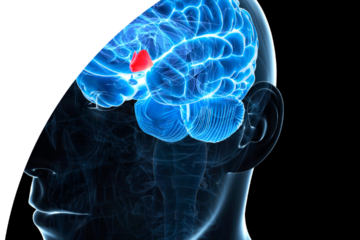:

Introduction
In today’s busy world, which is characterized by constant technological advancement and demands on our time, we’ve gotten very good at separating different aspects of our lives. We often tell the difference between our mental and physical health when it comes to our health, giving one more importance than the other. Our physical health gets our attention with obvious signs, but our mental health, which can be less obvious and more mysterious, may get less attention. But this contrast, even though it’s common, hurts the complex dance of our biology and mind. These two aspects are not separate silos that work on their own. Instead, they are active and linked, dancing with each other all the time in a way that affects our health and quality of life as a whole. This natural connection shows how important it is to look at health as a whole, not as a bunch of separate issues. We’ll look at the many ways our mental health affects our physical health and vice versa through a more integrated view. This will show how important holistic health practices are in this day and age.
The Mind-Body Link: More Than Just a Philosophy

Stress and the Body’s Response
There is a common thread running through all of our experiences: stress. Stress is a normal part of life. Workplace pressures, personal issues, or concerns about the state of the world can all contribute to it. Some stress can be good for us, like when it pushes us to do better or helps us concentrate. But long-term stress can be very bad for our mental and physical health.
1. Physical Ramifications:
Effects on the heart and blood vessels: Long-term stress sets off the body’s “fight or flight” reaction. Stress hormones, such as cortisol and adrenaline, are released because of this response. Long-term high amounts of these hormones can lead to inflammation and high blood pressure, which raises the risk of heart-related conditions. Long-term contact like this can cause problems like high blood pressure, heart attacks, and other heart diseases.
Disruptions in Metabolism and Immunity: Another worrying effect of long-term stress is that it can mess up metabolic processes. When you have high levels of cortisol, you may gain weight, especially around your middle. This can make your chance of getting type 2 diabetes even higher. Also, long-term worry weakens our immune systems, making us more likely to get sick. When the body has to deal with instant stressors, it shifts its attention to more important tasks, like immunity. This makes it less able to fight off illnesses.
2. Mental Strain Manifested:
The Dangerous Cycle of Pain and Stress: Physical pain, whether it’s from a long-term condition like headaches or from aches and pains that come and go, isn’t just something that happens to the body. Having this kind of pain for a long time can make your worry worse. Mental stress can get worse when someone worries about their health, the possible reasons of their pain, or how it will affect their daily life. This high level of anxiety can turn into a clinical anxiety disease or depression over time.
Physical Limitations and Their Effects on the Mind: In addition to direct pain, physical limitations or illnesses can also have an effect on our mental health by limiting the things we can do. For example, someone who has been hurt might not be able to do the things they love, which could make them feel alone, sad, or even depressed. In turn, this mental stress can make it take longer for the body to heal, showing how deeply our bodies and minds are connected.
Diet, Mood, and Cognition

That old saying, “You are what you eat,” has a deeper meaning than you might think. As important as what we eat is for our general health and appearance, what we eat is also very important for our mental health. Eating habits, both short-term and long-term, can affect how you think, feel, and even your risk of getting some mental illnesses.
1. Brain Fuel:
Mood-Boosting Nutrients: Some foods are famous for both their health benefits and their ability to make people feel better. Some foods that are high in Omega-3 fatty acids are fatty fish, walnuts, and flaxseeds. These acids have been linked to fewer depressive symptoms. Folate, a nutrient that has been shown to help with depression, is also found in large amounts in dark leafy veggies, whole grains, and fruits. Also, foods like turkey and bananas contain tryptophan, which helps the brain make serotonin, which is often called the “happiness chemical.”
Antioxidant Powerhouses: Free radicals cause oxidative stress, which is bad for brain health and has been linked to mood problems. Eating foods like nuts, berries, and dark chocolate that are high in vitamins can help fight this stress. Because they get rid of free radicals, these foods can help keep your brain healthy and stop mood swings.
2. Gut-Brain Axis:
Regarding mental health and microbiota, the gut is often called the body’s “second brain” because it has so many nerve cells. New research has shown that the microorganisms that live in our digestive systems, or gut microbiota, can change how our brains work and how we act. When these good bacteria are out of balance, it can cause inflammation and make the intestines more permeable, which has been linked to mental illnesses like sadness and anxiety.
Probiotics and Mood Regulation: As more people learn about the link between the gut and the brain, it becomes clearer what role probiotics play in mental health. These good bacteria can smooth out the microbiota in the gut. You can find them in fermented foods like yogurt, kefir, and sauerkraut. In this way, they not only help the digestive system, but they also boost the production of neurotransmitters and brain pathways that help control mood and the stress reaction.
Exercise: A Panacea for Mental and Physical Health

Everyone agrees that exercise has a lot of health benefits, whether it’s a quick walk in the park, a tough workout at the gym, or a relaxing yoga routine. But exercise has benefits that aren’t limited to better cardiovascular health or toned muscles. The mind and exercise are connected in many ways, including controlling mood, improving memory, and even protecting mental health over the long run.
1. Endorphin Rush:
Natural Ways to Relax: Endorphins, which are often called the body’s “natural painkillers,” are released in large amounts when you exercise. Neuropeptides like these are very important for fighting pain and worry. The “runner’s high” is a state of happiness that often replaces pain when endorphin levels rise. This natural high helps lower anxiety and sadness, which makes exercise a good way to deal with mental health problems without using drugs.
Depression: The release of endorphins isn’t the only way that exercise can improve your happiness. Researchers have also found that exercise can make other neurotransmitters, such as serotonin and dopamine, come out. Both of these chemicals are very important for controlling mood. Depression is often linked to an imbalance in their amounts, especially serotonin. So, regular exercise can be a very helpful way to keep your mind in balance and avoid depressed episodes.
2. Beyond Mood:
Brain Exercise: Working out your brain is just as important as working out your body. Brain functions like memory, attention, and problem-solving have been linked to better physical exercise. This better thinking is because exercise increases blood flow to the brain, bringing more oxygen and nutrients that are good for brain health.
Protection Against Degeneration: Doing a lot of exercise on a regular basis can protect you from neurodegenerative illnesses. Brain deterioration is a cause of diseases like Alzheimer’s and Parkinson’s. Exercise can help slow or even stop the onset of these diseases by improving neuroplasticity, which is the brain’s ability to reorganize and make new neural connections. Additionally, regular physical exercise protects the brain from inflammatory damage, which is a factor in many neurodegenerative disorders, because it reduces inflammation.
Holistic Well-being: Embracing the Connection
Recognizing the symbiotic relationship between mental and physical health propels us towards holistic health strategies. It becomes clear that neglecting one facet can inadvertently harm the other. Here’s how to harness this understanding:
Integrated Care Approaches: The Future of Holistic Health
The old way of thinking about treating mental and physical health as two different things is quickly changing. Instead, a new integrative model is coming into being that sees the mind and body as working together in a healthy way. Integrated care approaches, which seamlessly combine treatments for both emotional and physical health, are indicative of this change.
1. Comprehensive Consultations:
Getting help during health checks: One interesting approach that health professionals are using more and more is screening for mental health as part of regular physical exams. Just as an example, during a normal check-up, a doctor might ask a patient about their stress levels, sleep patterns, and emotional health. The patient might be sent to a counselor or psychologist right away if any red flags are found. This kind of behavior supports the idea that mental health is just as important to general health as physical health.
Mindfulness in Physiotherapy: Physiotherapists used to only work on restoring and keeping functional movement, but they are now learning new skills. Many doctors are teaching their patients mindfulness methods because they know that physical pain and mental stress can affect each other. Guided meditation, deep breathing exercises, and gradual muscle relaxation are some ways to ease both physical pain and the mental stress that comes with it.
Self-awareness and Proactivity: Listening to Mental and Physical Health
“Prevention is better than cure” is especially true when you think about how mental and physical health are linked. Individuals can often avoid more serious health problems by becoming more self-aware and taking care of themselves.
1. Recognizing Early Signs:
Physical Signs of Mental Distress: Physical signs of mental distress often show up. This can include headaches, stomach problems, or aches you can’t explain. Being aware of these changes in the body can help you find underlying mental health problems and treat them right away.
Effects of Physical Pain on the Mind: On the other hand, long-term physical pain can have a negative effect on a person’s mental health. Recognizing the frustration, hopelessness, or worry that come from long-term physical pain can lead to timely psychological help, keeping a physical problem from turning into a mental health issue.
Promoting Dual Discourses: Shaping a Holistic Health Narrative
In the quest for overall health, it’s not just the doctors and nurses who need to take responsibility. Society as a whole has a big impact on health storylines, which stress how mind and body are connected.
1. Open Dialogues:
Breaking taboos: Talking about mental health was frowned upon for a long time, and people would often do so in private. By talking about these issues more, society can make it normal to talk about mental health, making it the same as talking about physical health. People can share their stories in open forums, workshops, and media campaigns, which can help bust myths and build understanding.
Educational Programs: Community groups, schools, and colleges can do a lot to spread stories about holistic health. Younger people can get a better sense of what it means to be well by watching shows that talk about the natural connection between physical and mental health.
2. Community Collaborations:
There are events like health fairs and wellness vacations that offer both physical and mental health screenings. These kinds of events can help spread the idea of integrated health. These kinds of projects not only do important things, but they also stress the idea of mind-body unity.
Support Groups: Support groups run by the community can help people with specific illnesses by suggesting physical treatment and giving them emotional support. These groups can be very helpful places where people can share their thoughts, experiences, and ideas while also supporting each other.
To sum up, the mind and body are linked in such a complex way that we need a health paradigm that sees them as parts of the same thing. Society can move toward a future where everyone has complete, all-around health by using integrated care methods, encouraging self-awareness, and promoting holistic health conversations.
Conclusion:
It’s not just a science fact that mental and physical health are deeply connected; it’s an important principle that shapes our well-being. People usually look at these two worlds separately, but they are actually very connected. Each has an effect on the other that builds on itself. As our knowledge of health changes, more and more people are realizing that they need to look at their well-being from a more complete point of view. This way of thinking doesn’t just erase the false separation between mind and body; it also gives a complete plan for real health. By considering and caring for both of these things at the same time, we not only improve our quality of life but also our ability to bounce back from problems. Being mentally and physically healthy at the same time is the key to a life full of energy, happiness, and peace. This kind of life gives us more tools to deal with problems, enjoy the good things in life, and really grow.



0 Comments